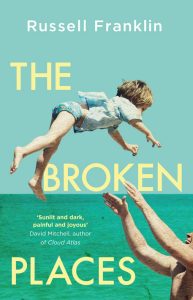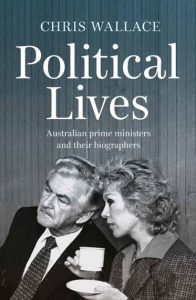Title: The Broken Places
Author: Russell Franklin
Publisher: Phoenix Books/Hachette, 2023; RRP $32.99
The Broken Places fits into the genre of biological fiction, defined as a work based on the life of a real person but developed further within a fictional framework.
Nobel Laureate Ernest Hemingway had three sons: John, Patrick, and Gregory, his youngest and favourite. The Broken Places is positioned within the history of Hemingway himself and the Hemingway family, but the main character is Greg, or Gigi as his family often called him.
Like his father, Greg was highly competitive and adventurous, a boy who won an international shooting competition in Cuba against far more experienced adults. He was fearless, muscular, and very fit. Being a little on the short side, he was also often referred to affectionately by his father as his ‘pocket rocket’. He also excelled academically and, when he left school, undertook medical training, working as a physician in NYC before moving to work in a small country town community hospital.
He and his older brother Patrick had a seemingly idyllic childhood including long stays with their larger than life, loving but overly indulgent father in his estate Finca Vigia in Cuba, including allowing them at a very young age to drink alcohol and smoke. Though he loved his sons he also demanded much of them. Being able to brag about his sons’ achievements gave him much pleasure, and the opposite was true if they failed, something of which they were both painfully aware. Despite this, they loved their father and in their own ways tried to adjust to the demands he made of them.
Greg, however, had a secret other life. Quite early on in childhood, he developed a fascination for wearing women’s clothing. This fascination grew steadily stronger as he got older, filling him with shame and self-loathing.
As he grew into adulthood, he suffered periodic attacks of manic depression. These manic attacks wreaked havoc with his relationships, causing him to escape his marriage and home life and take to the night streets trying desperately to deal with the mayhem in his mind, and usually ending up in bars or parties out of his mind on alcohol and drugs.
Treatment included electric shock therapy but this changed from being a medical intervention to another addiction. Over time he begun submitting to the treatment willingly, even seeking it out for the period of peace and calm that followed. He refers to the sessions as his ‘shocks’, in the same way an addict might refer to needing more heroin or an alcoholic needing another bottle of whisky. The relief they provided, however, became shorter and shorter and the mania and the black depression which preceded them would always return.
@ the Chicago Tribune
The sections in the book dealing with his growing understanding of his desire to dress in women’s clothing are tragic and convincing. This side of himself was unwelcome but over time he found the only way to stop it from destroying his sanity, and his professional life as doctor, was to allow it a place in his life, in a safe and structured way. Like his ‘shocks’, however, each time he did, the reprieve was temporary. By the end of The Broken Place, however, he comes to a place where he is able to accept himself as all of who he is: Greg, Gigi, and finally, Gloria .This book is how he gets there, as well as how his family tries to support him.
The author, Briton Russell Franklin, states clearly at the start that this, his debut novel, is a fictional work inspired by Gregory’s life. There is no mention of Hemingway family members in his Acknowledgements but at the end of the work he does provide a useful list of biographical and autobiographical works written by a number of them.
Franklin himself was able to write the book after being selected for the prestigious London Library Emerging Writers Programme 2000-2001 and he thanks those in his cohort there ‘for helping me take myself seriously as a writer’.
In his Author’s Note at the beginning, and aware perhaps of his responsibility to his subject and possible responses from their fans, he writes:
I make no claims that my approach is definitive, but I hope the reader will appreciate that it arises from a place of love and respect.
I did have some qualms about this work. The book is filled with actual Hemingway family members and references real events and places like Hemingway’s Cuban home so it’s difficult to extricate what is fiction from the factual.
Franklin’s writing is also very engaging and convincing. His characters leap from the pages and it is easy to see it may be taken as more factual than it actually is.
I enjoyed the book despite these doubts. The list of references is reassuring, and Franklin’s reference to academic Paul Hendrickson’s Hemingway’s Boat: Everything He Loved in Life, and Lost, 1934-1961 as ‘the original well spring and authority on the real Greg’s life’ offers much. In there may be found a clearer sense of what is true and what is fiction.
These concerns aside, I found the resolution at the end to be satisfying and the descriptions of his occasional ventures out into the world, unmasked, dressed as a woman – including the terrible moment his father walked in on him, still only a young boy, dressed in his stepmother’s clothing – painfully convincing, giving insight into how very difficult life is in a world which restricts gender identity to either male or female. The author taking us deep into the loneliness and the shame and conveying it skilfully and movingly, and, as he promises in his Author’s Note, respectfully.
In conclusion, the title, taken from Ernest Hemingway’s A Farewell to Arms, provides in retrospect an excellent introduction to what lies at the heart of his favourite son’s story.
The world breaks everyone and afterward many are strong at the broken places.
Reviewed by: Rhonda Cotsell
Ballarat Writers Inc. book review group
Review copy provided by the publisher



